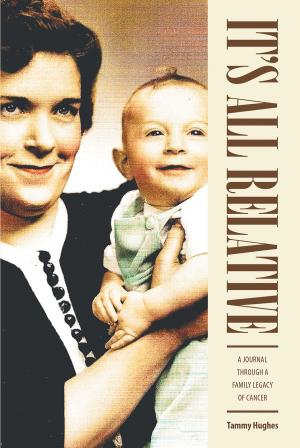Fit Kids Make Happy Kids
Nonfiction, Health & Well Being, Health, Health Care Issues, Healthy Living| Author: | Heather Villarreal | ISBN: | 9781682897591 |
| Publisher: | Page Publishing, Inc. | Publication: | February 6, 2017 |
| Imprint: | Language: | English |
| Author: | Heather Villarreal |
| ISBN: | 9781682897591 |
| Publisher: | Page Publishing, Inc. |
| Publication: | February 6, 2017 |
| Imprint: | |
| Language: | English |
Part One – Kids’ Daily Activity through the Years
As early as 1600 BC, children used vines for play. Jumping rope has evolved in style and intensity throughout the years, but it still remains one of the most popular exercises. It burns up to twenty calories per minute. Although children have been playing for thousands of years, play was not their primary source of exercise. In fact, their daily chores, such as plowing fields, washing clothes, caring for farm animals, and preparing meals burned more calories than any exercise could have. Today’s luxuries, such as washing machines and power engines, have minimized the amount of physical chores we do.
Lack of movement has caused today’s children to become more sedentary and overweight. Obesity creates physical and emotional problems that children may not be aware of. Giving the reader some insight to their lack of physical mobility and the problems it creates, this book gives them power to do something about it. This discussion of calories and how weight gain/loss is achieved will help the reader achieve better health. There are many fun examples of exercise (such as jumping rope) for children, at minimal cost, to facilitate more activity.
Lack of sleep can lead to obesity, anxiety, attention deficits, and hyperactivity. The suggestions Heather Villarreal has made for a better night’s sleep will help children get to bed. They will also understand why sleep is crucial for an active lifestyle.
Part Two - Kids’ Daily Nutrition through the Years
By looking back into the 1800s, readers can see why kids did not need physical activity for exercise. Having to grow, prepare, and preserve their own foods by canning, drying, or salting required a lot of physical activity. We have evolved into a fast-food world, in which we don’t think about what we are eating. There are, however, better choices we can make even when eating in or out. The discussions of the six main nutrients helps children understand why they need specific foods for their body. The other important ingredients for a healthy body include water, fiber, and micronutrients. Fit Kids Make Happy Kids gives the reader charts and examples on how to read the food labels to identify what they are eating and recognize their portions. The recommended serving size charts should help with water, fiber, and nutrient consumption. The “rate your plate” method is a new way to see the nutrition on your plate. It will give the reader the confidence that they are not overeating. Finally, the book gives them a fun experiment to do with their parents so they can visualize what serving sizes look like.
Part Three - A Parental Guide to Supporting a Successful, Happy, and Healthy Child
Statistics show that obesity runs in families. Fit Kids Make Happy Kids includes a parent section to help them motivate and encourage their children. The book shows parents different ways to cook and choose healthier foods. Baking, grilling, and choosing whole grains can give children the nutrients they need without sacrificing taste. Changing from soda or juice to water can save calories. Adding a little juice to water can help improve taste.
Parents will find suggestions on increasing their children’s activity and giving suggestions on what to do if they are resistant.
Finally, the book includes recipes for snacks and meals.
Part One – Kids’ Daily Activity through the Years
As early as 1600 BC, children used vines for play. Jumping rope has evolved in style and intensity throughout the years, but it still remains one of the most popular exercises. It burns up to twenty calories per minute. Although children have been playing for thousands of years, play was not their primary source of exercise. In fact, their daily chores, such as plowing fields, washing clothes, caring for farm animals, and preparing meals burned more calories than any exercise could have. Today’s luxuries, such as washing machines and power engines, have minimized the amount of physical chores we do.
Lack of movement has caused today’s children to become more sedentary and overweight. Obesity creates physical and emotional problems that children may not be aware of. Giving the reader some insight to their lack of physical mobility and the problems it creates, this book gives them power to do something about it. This discussion of calories and how weight gain/loss is achieved will help the reader achieve better health. There are many fun examples of exercise (such as jumping rope) for children, at minimal cost, to facilitate more activity.
Lack of sleep can lead to obesity, anxiety, attention deficits, and hyperactivity. The suggestions Heather Villarreal has made for a better night’s sleep will help children get to bed. They will also understand why sleep is crucial for an active lifestyle.
Part Two - Kids’ Daily Nutrition through the Years
By looking back into the 1800s, readers can see why kids did not need physical activity for exercise. Having to grow, prepare, and preserve their own foods by canning, drying, or salting required a lot of physical activity. We have evolved into a fast-food world, in which we don’t think about what we are eating. There are, however, better choices we can make even when eating in or out. The discussions of the six main nutrients helps children understand why they need specific foods for their body. The other important ingredients for a healthy body include water, fiber, and micronutrients. Fit Kids Make Happy Kids gives the reader charts and examples on how to read the food labels to identify what they are eating and recognize their portions. The recommended serving size charts should help with water, fiber, and nutrient consumption. The “rate your plate” method is a new way to see the nutrition on your plate. It will give the reader the confidence that they are not overeating. Finally, the book gives them a fun experiment to do with their parents so they can visualize what serving sizes look like.
Part Three - A Parental Guide to Supporting a Successful, Happy, and Healthy Child
Statistics show that obesity runs in families. Fit Kids Make Happy Kids includes a parent section to help them motivate and encourage their children. The book shows parents different ways to cook and choose healthier foods. Baking, grilling, and choosing whole grains can give children the nutrients they need without sacrificing taste. Changing from soda or juice to water can save calories. Adding a little juice to water can help improve taste.
Parents will find suggestions on increasing their children’s activity and giving suggestions on what to do if they are resistant.
Finally, the book includes recipes for snacks and meals.















